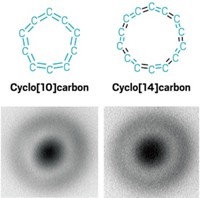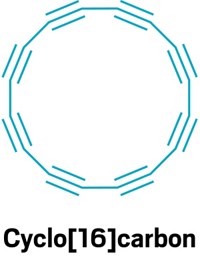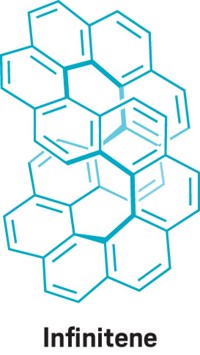Advertisement
Grab your lab coat. Let's get started
Welcome!
Welcome!
Create an account below to get 6 C&EN articles per month, receive newsletters and more - all free.
It seems this is your first time logging in online. Please enter the following information to continue.
As an ACS member you automatically get access to this site. All we need is few more details to create your reading experience.
Not you? Sign in with a different account.
Not you? Sign in with a different account.
ERROR 1
ERROR 1
ERROR 2
ERROR 2
ERROR 2
ERROR 2
ERROR 2
Password and Confirm password must match.
If you have an ACS member number, please enter it here so we can link this account to your membership. (optional)
ERROR 2
ACS values your privacy. By submitting your information, you are gaining access to C&EN and subscribing to our weekly newsletter. We use the information you provide to make your reading experience better, and we will never sell your data to third party members.
Chemical Bonding
Chemists use atomic manipulation to nudge cyclo[18]carbon into being
Probe microscopy helps researchers create and visualize a carbon allotrope that was first predicted in the 1980s
by Laura Howes
August 21, 2019

After some 30 years of trying different approaches to make a predicted allotrope of carbon, chemists have finally done it with a little atomic manipulation. The result is a ring of 18 carbon atoms joined together by alternating single and triple bonds (Science 2019, DOI: 10.1126/science.aay1914).
“It’s both an allotrope and a molecule, which is why this synthesis is so sensational,” says Rik Tykwinski, a physical organic chemist at the University of Alberta, who wasn’t involved in the work.
Around the same time that chemists discovered and characterized another carbon allotrope, fullerenes, calculations suggested that smaller carbon molecules could theoretically exist as rings—so called cyclo[n]carbons. But without being able to make, isolate, and characterize the molecules, chemists could only speculate at their properties, such as how the carbon atoms were bonded. Researchers have now succeeded in making and characterizing the structure of cyclo[18]carbon. Their synthesis combined atom-level techniques with precursor molecules that chemists first used to try to make the allotrope back in the 1980s.
In 2016, Leo Gross and his coworkers at IBM Research-Zurich demonstrated how they could use voltage pulses from the needle tip of a scanning tunneling microscope to break open bonds in a molecule one by one and then inspect what they had made by atomic force microscopy (AFM). When Przemyslaw Gawel, a postdoc in Harry Anderson’s lab at Oxford University, saw Gross present that work at a conference, he saw an opportunity to use the IBM technique to go after the predicted carbon rings. Gawel introduced himself and the two groups began to collaborate to build the cyclic allotrope.
“With my physics background I can understand that it’s a big deal to study and stabilize a new allotrope of carbon,” Gross says. But he adds that he was surprised, and pleased, by how easy it was the allotrope. “Making this molecule seemed like a long shot,” he admits.
When working on model systems for this project, the team first showed that they could nudge alkenes together to form a molecular wire (Nat. Chem., 2018, DOI: 10.1038/s41557-018-0067-y). In the new work, Katharina Kaiser, a PhD student working at IBM, used the method to pick off carbon monoxide molecules from a multiring precursor to eventually yield cyclo[18]carbon. “It’s much easier to break stuff than to make stuff,” Gross says. He adds that the group want to use this ring, and its precursors, as molecular building blocks for custom molecules and molecular electronics.
Kaiser also used AFM to explore the molecule’s structure and found that the molecule has nine-fold symmetry. Combining that observation with calculations allowed the team to determine that cyclo[18]carbon is made up of an alternating sequence of single and triple bonds, rather than the alternative, a continuous ring of double bonds.
In the 1980s, when he was a PhD student at the University of California, Los Angeles, trying to make cyclo[18]carbon, Yves Rubin synthesized the precursor molecules that the team resurrected for their new work. Now, back at UCLA as a group leader, Rubin is still working on carbon-rich molecules. He says the work is “a long-awaited result.”
Tykwinski agrees, likening the discovery to that of fullerenes. “This is really a clever, landmark study in carbon chemistry.”
CORRECTION
The story was updated on Aug. 16, 2019, to correct the DOI for the new paper.





Join the conversation
Contact the reporter
Submit a Letter to the Editor for publication
Engage with us on Twitter